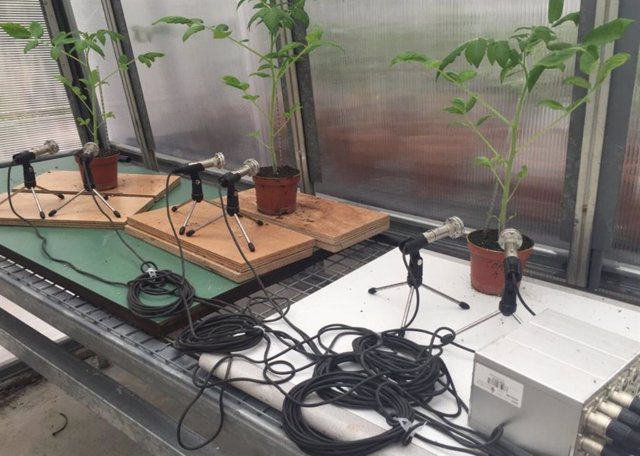
Madrid, March 30 (European Press) –
Israeli researchers investigated that drought-stressed tomato and tobacco plants, or because their stems had dried out, They make sounds of similar volume to conversational sounds.
The frequency of these sounds is too high for our ears to detect, but it can potentially be heard by insects, other mammals, and possibly other plants. It was also published in Cell magazine.
Even in the quiet field, there are sounds that we don’t hear that contain information. There are animals that can hear these sounds, says Lilac Hadani, an evolutionary biologist and theorist at Tel Aviv University. So there is potential for a significant amount of vocal interaction.”
Although ultrasonic vibrations have already been recorded in plants, this is the first evidence that they travel through the air, a fact that makes them even more relevant to other organisms in the environment.
Plants interact with insects and other animals all the time, and many of these organisms use sound to communicate. So it would be suboptimal for plants not to use sound at all,” Hadani explains.
The researchers used microphones to record healthy and stressed tomato and tobacco plants, first in a soundproof room and then in a noisier greenhouse. They subjected plants to stress in two ways: Not watering it for several days and cutting off the stems.
After recording the plants, the researchers trained a machine learning algorithm to distinguish between unstressed plants, thirsty plants, and stunted plants.
The team found that stressed plants made more sounds than unstressed ones. A stressed plant produces between 30 and 50 of these clicks per hour at seemingly random intervals, while non-stressed plants make much fewer clicks. “When the tomato is not pressed, it is very quiet. Hadani confirms.
Water-stressed plants began beeping before they visibly dried out, with the sounds peaking after 5 days without water before decreasing again as the plants completely dried out.
The types of sound produced vary depending on the cause of the stress. The machine learning algorithm was able to accurately distinguish between dehydration and shear stress He was also able to distinguish whether the sounds were coming from a tomato or a tobacco plant.
Although the study focused on tomato and tobacco plants for their ease of cultivation and standardization in the laboratory, the research team also recorded other plant species. “We discovered that many plants—maize, wheat, grapes, and cacti, for example—make sounds when under stress,” Hadani says.
The exact mechanism behind this noise is unclear, but the researchers suggest it could be due to the formation and bursting of air bubbles in the plant’s vascular system, a process called cavitation.
It is also unclear whether plants make these sounds to communicate with other organisms, but the fact that they exist has significant ecological and evolutionary implications. “Other organisms may have evolved to hear and respond to these sounds. Hadani points out. For example, a moth trying to lay eggs on a plant or an animal trying to eat a plant might use sounds to guide their decision.”
Other plants can also hear and take advantage of sounds. It is known from previous research that plants can respond to sounds and vibrations. Hadani and several other team members have previously shown that plants increase the concentration of sugar in their nectar when they “hear” sounds made by pollinators, and other studies have shown that plants change their gene expression in response to sounds.
“If other plants have information about stress before it actually happens, they can prepareHad me reasons.
According to the authors, acoustic recordings of plants can be used in agricultural irrigation systems to monitor the hydration status of crops and help distribute water more efficiently.
“We know there’s a lot of ultrasound out there. Every time you use a microphone, you discover that many things produce sounds that humans can’t hear. “The fact that plants make these sounds opens up a whole new field of opportunity to communicate, to hear, and to exploit these sounds,” says co-lead author Yossi Yovel, a neuroscientist at Tel Aviv University.
He asks, “Now that we know that plants make sounds, the next question is: who might be listening?”. “We are currently studying the responses of other organisms, both animals and plants, to these sounds, and are also exploring Our ability to identify and interpret sounds in completely normal environments.

“Award-winning alcohol trailblazer. Hipster-friendly internetaholic. Twitter ninja. Infuriatingly humble beer lover. Pop culture nerd.”
